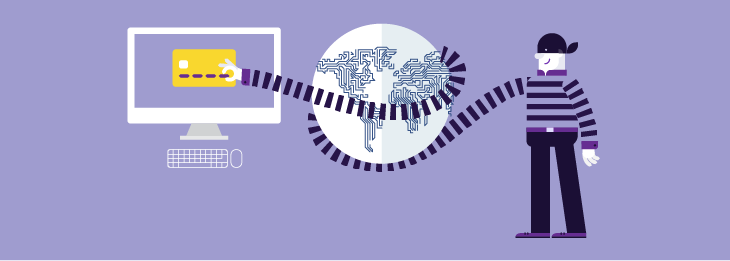
The omnipresence of the internet, in all aspects of both our private and work lives, has digitized our existence and transformed it into sets of data, valuable to both companies and cybercriminals. While when it comes to businesses, users often agree to share their data as part of a give and take, where services are customized based on their data for a better user experience, sensitive information is also often targeted by malicious individuals through various types of scams and cyberattacks.
It is therefore important that both companies and individuals understand some of the basic, but crucial practices that help keep data secure on the internet. Here are our top five picks:
1. Two-factor authentication
Most email providers and internet services now offer two-factor authentication, a way of adding an extra layer of security on top of traditional passwords. It implies the existence of a device, such as a mobile phone or USB stick, that only the user has physical access to, that is used to generate a code whenever logging in from new devices. A familiar example of it comes from banking services where it is a common mandatory feature of online banking.
While some may find two-factor authentication troublesome because of the added complexity to logins, it eliminates the risk posed by traditional phishing attacks which usually try to trick users into revealing their usernames and passwords. With two-factor authentication, even if they lose this vital information, cybercriminals could not access their accounts without the physical token.
2. Password security and management
Weak passwords are the bane of internet and data safety, with many users choosing easy to guess passwords such as 123456 or qwerty. Articles exploring how easy it is to crack passwords regularly appear in specialized tech media. While advice concerning the perfect uncrackable password vary, most experts say that a randomly chosen list of 16 characters, that includes letters, lowercase and uppercase, numbers and symbols, are the best way to stay safe.
Of course, these can be rather troublesome to remember so many opt to use a password manager that allows them to store these complex passwords in a program locked with a single password. In this way, users need only remember the password manager’s login credentials which allows them to safely check passwords whenever they need to access one of their online accounts.
3. Locking down or restricting sensitive data
Most companies nowadays, whether because of the proliferation of cyberattacks or the appearance of stricter data protection legislations, have decided to take a more proactive approach to data protection. This implies a greater transparency of processes involving sensitive information, a clearer knowledge of where that data winds up as well as the limitation of its use, transfer and access.
All this is predominantly done through Data Loss Prevention solutions such as Endpoint Protector that allow admins to scan entire networks and block the transfer of certain files based on predefined sensitive data profiles.
4. Encryption
Encryption itself has been lauded as a panacea against breaches. Cybercriminals can’t do anything with data if it’s encrypted and they don’t have the keys to it. It may be lost, but it will definitely not be sold or compromise a user’s entire internet presence.
From the possibility to encrypt an entire hard drive, files in the cloud or as they are being transferred over the internet, encryption has become a go-to tool when it comes to data security. It is important to not neglect portable devices, which can often be easily stolen or forgotten. Most mobile phones nowadays offer the possibility of encrypting their storage and software that automatically encrypts any files transferred onto USB drives can be deployed both by companies and individuals.
5. Remote location and device wiping
Mobile phones nowadays can hold as much sensitive information as a computer. From crucial work emails to lists of important contacts and files, they can pose a great risk of leaks if they are not protected.
When it comes to phones, the number one risk is physical theft or misplacement of a device. In such cases, it is essential that remote location and device wiping are enabled for them. One allows users to track the whereabouts of their phone, the other, in case of theft, allows them to remotely wipe the device, ensuring no sensitive information falls into unwanted hands.
These are only a few of the basic steps users and companies can take to ensure data security. While we often rely on specialized software to protect our data, it is also essential that users understand how their data can be made vulnerable. Through raised awareness, they can thus work together with software to make sure best practices are constantly in use.
Download our free ebook on
Data Loss Prevention Best Practices
Helping IT Managers, IT Administrators and data security staff understand the concept and purpose of DLP and how to easily implement it.









